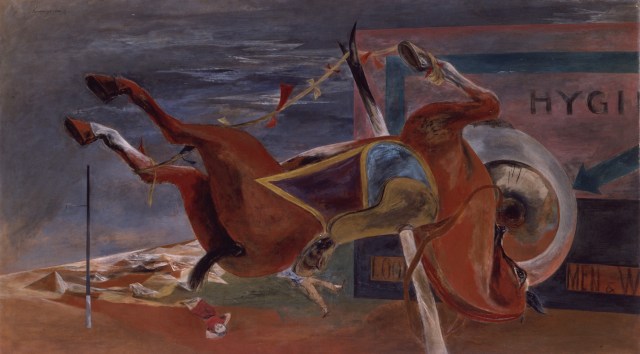#SouthOfUnionSquare, the Birthplace of American Modernism: Yasuo Kuniyoshi
“South of Union Square, the Birthplace of American Modernism” is a series that explores how the area south of Union Square shaped some of the most influential American artists of the 20th century.

Throughout the 20th century, the area south of Union Square attracted painters, writers, publishers, and radical social organizations, many of whom were challenging accepted American social and cultural ideals. This area is true crossroads — where art, politics, industry, commerce, the New York elite, and the working class collided to create an eclectic culture and built environment emblematic of New York City’s status as America’s “melting pot.” From the late 19th to the mid 20th century a series of artist enclaves and galleries developed in the area south of Union Square.

One particularly notable collection of artist studios was located at 30 East 14th Street, a five-story structure built in 1880 as a retail store and lofts for W. Jennings Demorest. Demorest was the developer, businessman, and politician largely responsible for the late-19th century transformation of 14th Street from a high-end residential corridor to a center of commerce. The lofts at 30 East 14th Street have been home to numerous artist studios since the late 19th century.


One of the most significant artists to keep a studio in this building was Yasuo Kuniyoshi (September 1, 1889 – May 14, 1953), an influential Japanese-American painter, photographer, and printmaker. After immigrating to the United States alone in 1906 at age 16, Kuniyoshi first lived in Seattle where he worked as an office porter, before studying art in Los Angeles. Eventually, he made his way to New York City, where in 1916 he studied at the Art Students League under Kenneth Hayes Miller alongside Stuart Davis, Edward Hopper, and Alexander Calder. Kuniyoshi’s first solo exhibition was in 1922 at the Daniel Gallery in Manhattan. His work from the 1920s is considered by many critics to be his most original and inventive. He drew on American folk art, Japanese design and iconography, and European modernism to create a distinctive visual style. He exhibited with the Daniel Gallery until its closure in 1931.

Despite his early critical and commercial success, Kuniyoshi still experienced a great deal of discrimination as a Japanese American. The Immigration Act of 1924 barred Japanese immigrants from seeking American citizenship. When, in 1929, Kuniyoshi was selected as one of “19 Living Artists” exhibited at MoMA, his inclusion in this group exhibit brought controversy surrounding whether or not he was “American” enough to be included. Following Pearl Harbor in 1941 and the United States’ entry into World War II, Japanese Americans were classified as “enemy aliens,” and more than 110,000 people of Japanese descent along the West Coast were forced into “internment camps.” While people of Japanese descent were not interned on the East Coast, Kuniyoshi still faced discrimination by the United States government. Kuniyoshi’s camera was taken from him (Kuniyoshi’s photography was his primary source of income at this time), his bank accounts were frozen, and he was prohibited from traveling outside of the New York area.


During this time, Kuniyoshi took great pains to indicate his allegiance to America. He promptly volunteered to aid propaganda efforts against Japan through radio programming (one of which was titled “Japan against Japan”), and poster projects of the Office of War Information. Kuniyoshi insisted: “In appearance, I am Oriental but my beliefs, my ideals, and my sentiments have been shaped by living in the free American atmosphere most of my life. At heart, I am an American and I see and feel everything that way.” Tragically and despite multiple applications, the United States never offered Kuniyoshi American citizenship.


Kuniyoshi’s influence on American art cannot be overstated; the first elected President of the American Artist’s Group, he was also on the executive committee of the American Artists’ Congress, was a Guggenheim Fellowship recipient, and was awarded first prize at the Carnegie Institute in 1944. In 1948, Yasuo Kuniyoshi was the first living artist to receive a retrospective at the Whitney Museum of American Art. While Kuniyoshi did not create work in the realist style of the area south of Union Square’s namesake Fourteenth Street School, his figural modern paintings and prints are indicative of the thriving art scene in the area south of Union Square.
Despite its rich history, 30 East 14th Street and other buildings in the area south of Union Square lack landmark protections and remain vulnerable to demolition at any time. You can discover more locations in this neighborhood where painters and sculptors transformed the art world on our #SouthOfUnionSquare Map and Tours. Village Preservation has recently received a series of extraordinary letters from individuals across the world, expressing support for our campaign to landmark a historic district south of Union Square. To help landmark these incredible historic structures and other buildings in this area, click here.
